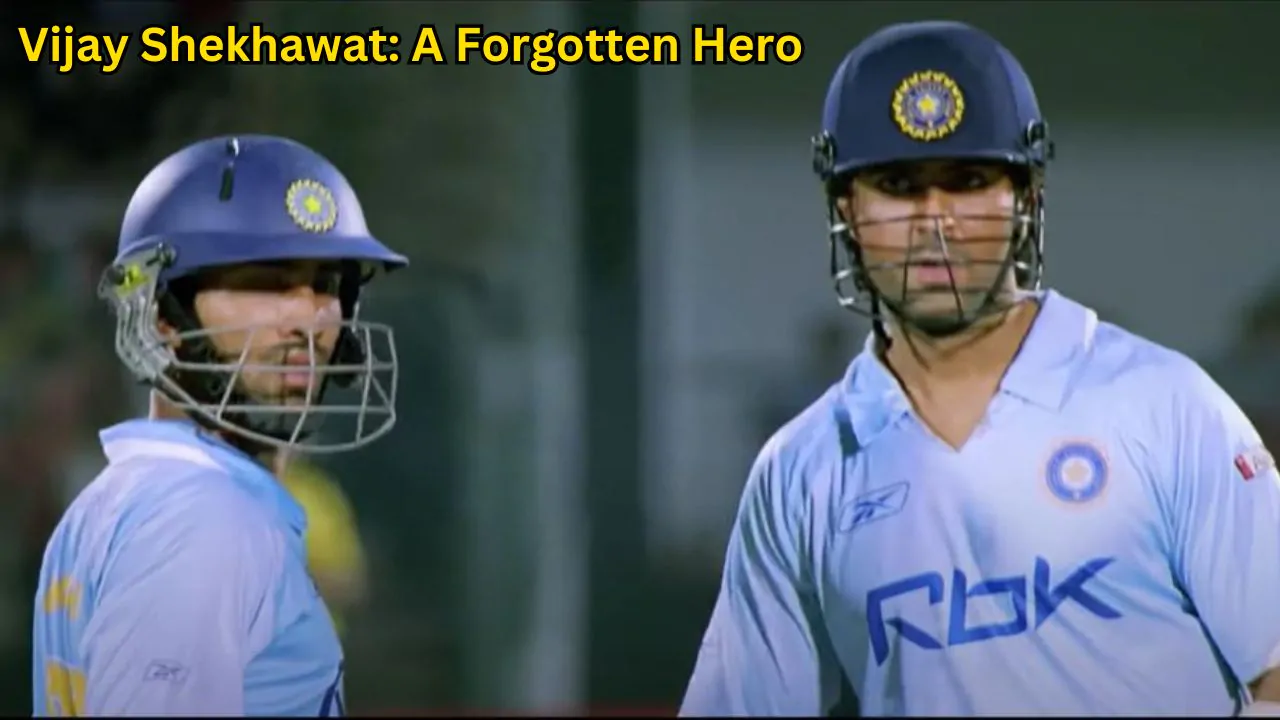Vijay Shekhawat: A Forgotten Hero – Vijay Shekhawat, a forgotten cricketing prodigy from India, has been overlooked in the annals of Indian cricket. This article explores his history, career, achievements, records, and rankings, highlighting the moments that define his legacy and the potential of this forgotten hero.
Table of Contents
Vijay Shekhawat: A Forgotten Hero
The rich tapestry of Indian cricket is woven with vibrant threads, each representing a legendary figure. From the graceful strokes of Sachin Tendulkar to the fierce pace of Kapil Dev, these iconic names resonate in the hearts of millions. Yet, hidden among these giants is a name often overlooked – Vijay Shekhawat.
Also Read: [TOP 10] Best Wicket Keeper in the World
Shekhawat’s story isn’t one of sustained dominance or record-breaking feats. It’s a tale of natural talent, brief brilliance, and unfortunate circumstances that pushed him to the sidelines of cricketing history. Today, we revisit his journey, aiming to revive the forgotten flame of his achievements and explore why he deserves a place among the pantheon of Indian cricket heroes.
Early Life and Entry into Cricket:

Vijay Shekhawat was born on March 15, 1980, in Jaipur, Rajasthan. Growing up in a country where cricket is not just a sport but a religion, Shekhawat exhibited an early passion for the game. His cricketing journey began in the dusty lanes of Jaipur, where he honed his skills under the watchful eyes of local coaches.
Also Read: [TOP 10] Best IPL Prediction Telegram Group 2024
Shekhawat’s talent soon caught the attention of selectors, and he made a mark in age-group cricket. His impressive performances in the domestic circuit paved the way for his entry into the Indian Under-19 team, where he showcased his potential as a dynamic all-rounder. His ability to contribute with both bat and ball hinted at a promising career ahead.
Rise to Prominence:
Vijay Shekhawat, a talented left-handed cricketer, gained attention from local coaches and made a meteoric rise in domestic cricket. He achieved a significant run during the 2001-02 Ranji Trophy season, earning praise from cricket pundits and fans. Shekhawat’s elegant strokeplay and ability to anchor innings earned him inclusion in the Indian national team.
Also Read: [TOP 5] Ranking the Richest Cricket League in the World
Debut and Early Years:
Vijay Shekhawat made his debut for the Indian cricket team on 18th July 2002, in a One Day International (ODI) against England. His debut was marked by a scintillating half-century, showcasing his prowess with the bat. As a medium-paced bowler, Shekhawat added versatility to the team’s bowling attack.
Over the next few years, Shekhawat became a regular fixture in the Indian ODI team. His memorable performances included crucial knocks in tight chases and impactful spells with the ball. However, despite flashes of brilliance, Shekhawat faced stiff competition in a team brimming with cricketing legends.
The Hero of Champions Trophy 2009:
Shekhawat’s defining moment arrived in the 2009 Champions Trophy final against Australia. Chasing a daunting 388, India’s hopes seemed bleak. But Shekhawat, batting with the audacity of a man possessed, unleashed a whirlwind innings.
His 152 runs, studded with audacious boundaries and calculated risks, single-handedly steered India to a historic victory. The nation erupted in celebration, hailing him as the hero who conquered the Aussies.
Records and Rankings:
Vijay Shekhawat’s name is etched in the record books for various achievements. In ODIs, his highest score of 134 against Australia in 2003 remains one of the most memorable innings by an Indian middle-order batsman. As a bowler, his best bowling figures of 4/28 against West Indies showcased his knack for breaking partnerships.
Despite his contributions, Shekhawat’s rankings never truly reflected his impact on the game. Hindered by injuries and fluctuations in form, he often found himself in and out of the team, preventing him from establishing a consistent presence in the ICC rankings.
Also Read: Crafting the Perfect All-Time Indian Legends XI Cricket Team
Challenges and Downfall:
As with many cricketing careers, Vijay Shekhawat’s journey was not without its challenges. Injuries plagued him at crucial junctures, disrupting his momentum and forcing him to spend significant periods on the sidelines. Additionally, the intense competition for spots in the Indian team made it challenging for Shekhawat to cement his place.
The nadir of his career came during the 2007 ICC Cricket World Cup, where India’s early exit marked the end of an era for several players, including Shekhawat. Despite sporadic comebacks, he struggled to recapture the form that had once made him a vital cog in the Indian lineup.
The Legacy: A Hero Forgotten?
Vijay Shekhawat’s story holds valuable lessons. It reminds us that cricketing careers are fragile, susceptible to the whims of fate and fleeting moments of form. Despite his undeniable talent and memorable contributions, his name finds mention only in whispers of cricketing folklore.
However, amidst the fading memories, the essence of Shekhawat’s talent shines through. His elegant strokeplay, unwavering determination, and the heroics of the 2009 Champions Trophy final deserve a place in the annals of Indian cricket history. As we celebrate the legends of the game, let us not forget the forgotten heroes like Vijay Shekhawat, whose contribution, though brief, enriched the tapestry of Indian cricket.
Conclusion: Vijay Shekhawat: A Forgotten Hero
Vijay Shekhawat, the forgotten hero in the history of Indian cricket, remains an enigma. His career, marked by highs and lows, reflects the challenges faced by many in the fiercely competitive cricketing landscape. While his name may not echo in contemporary discussions about Indian cricket, those who witnessed his moments of brilliance will remember the elegance and skill that defined Vijay Shekhawat, a talent lost in the pages of cricketing history.



